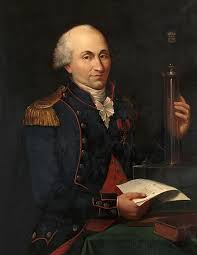
Charles A. Coulomb
Charles-Augustine de Coulomb (June 14, 1736 - August 23, 1806) was a French military engineer and physicist. He is best known as the pioneer of the same name of what is now called Coulomb's law, a description of the electrostatic forces of attraction and repulsion, although he also did important work on friction. The SI unit of electric charge, the pendant, was named after him in 1908. Charles-Augustin de Coulomb was born in Angouleme, county of Angumois, France, with Henry Coulomb, inspector of the royal demine, originally from Montpellier, and Catherine Boyett. , He was baptized in the parish church of St. Andrew. The family moved to Paris in early childhood, and he studied at Mazarin College. His studies included philosophy, language, and literature. He also received a good education in mathematics, astronomy, chemistry, and botany. When his father failed financially, he was forced to leave Paris and went to Montpellier. During this time, Coulomb presented his first publication to the Society of Sciences in Montpellier. He returned to Paris and passed the high school exams in 1760. He graduated in 1761 and joined the French army as an engineer with the rank of lieutenant. Over the next twenty years, he worked in various places where he was engaged in engineering: construction, strengthening, soil mechanics, as well as in other areas of technology. His first publication was in Brest, but in February 1764 he was sent to Martinique, in the West Indies, where he was commissioned to build a new fort Bourbon, and this task occupied him until June 1772. His health had been failing for three years. he spent on Martinique, which will affect him for the rest of his life. Upon returning to France, Coulomb was sent to Bushen. However, now he began to write important works on applied mechanics and presented his first work at the Academy of Sciences in Paris in 1773. In 1779, Coulomb was sent to Rochefort to collaborate with the Marquis de Montalembert in the construction of a fort made entirely of wood. near Ile d'Ex. During his period at Rochefort, Coulomb continued his research in the field of mechanics, in particular, using the shipyards in Rochefort as laboratories for his experiments. Upon returning to France with the rank of captain, he worked in La Rochelle, on the islands of Aix and Cherbourg. First, he discovered the inverse relationship of the force between electric charges and the square of their distance, and then the same relationship between the magnetic poles. Later, this relationship was named in his honor as the law of Coulomb.
